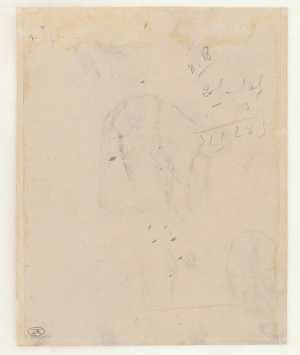Camille Pissarro was born on the island of Saint Thomas, one of today's Virgin Islands. In 1854 Pissarro settled in Paris. He worked in a number of studios and was admitted to the Académie Suisse, where he became acquainted with Monet and Cézanne. In 1859 he took part in the Paris Salon, but in subsequent years his work was no longer accepted. When the Franco-German war broke out, Pissarro fled to London. After his return to Paris, Pissarro concentrated more and more on painting outdoors. Under the influence of Cézanne, Pissarro began experimenting with new painting techniques. At the last impressionist exhibition in 1886, Pissarro introduced the painter George-Pierre Signac, whose scientific approach to painting appealed to him. He continued, however, to employ an spontaneous impressionist painting style.

Camille Pissarro
Charlotte Amalie 1830 - Parijs 1903

















